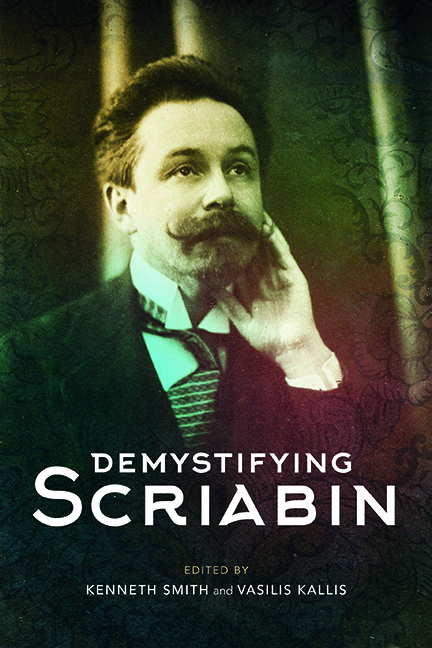8 - Demystifying the Mystic
Published online by Cambridge University Press: 07 October 2022
Summary
When Scriabin published his first opus, and despite thedaring experimentations of pioneering Romanticcomposers such as Liszt, Wagner, andRimskiĭ-Korsakov, tonality was still the unequivocalgoverning musical language in Europe and America. Atthe moment of his untimely death, the landscape ofart music was radically transformed. The dernier cri of art music hadalready embraced Schoenberg's daringexperimentations with atonality, as well asStravinsky’s, Bartók’s, and Debussy'sexperimentations with non-diatonic modality andnovel rhythmical effects.
But Scriabin was not a mere observer of theseadvancements. He assumed a leading role as well, andthe specifics of his transformation from a Romanticcomposer to a radical avant-gardist are outstanding,to say the least. Scriabin's well-known infatuationwith Chopin and Liszt offered a wide perspective onsome of the most novel techniques of the lateRomantic period. Their discovery by the youngRussian composer provided a study in musicalprocess. Apart from the various innovative means tosuppress tonal determinacy (i.e., tritoneprogressions, emphasis on the cycle of equalthirds), Scriabin internalised Liszt's uniqueapproach to motivic transformation. And despite hiswell-known distaste for Russian nationalistic music,Scriabin was not entirely immune to Russianinfluence. From his own cultural legacy, heinherited the skill of creating meaning from pure orvaried motivic repetitions.
Regarding the reception of the composer and his music,his image as a mystic and the symbolic power of hismusic assume centre stage. Nonetheless, the symbolicis projected onto an organisational backdrop thatstrongly suggests the presence of systematicstructure and process – the music becomes the prismfor a magnificent scalar ‘counterpoint’. Thischapter seeks to uncover the organisationalprinciples that govern Scriabin's post-tonal musicand the possible prefiguration of his late system inhis transitional period.
Scriabin scholarship has made substantial efforts touncover the compositional principles in his latemusic. This analytical discourse (which focuses asmuch on pitch material as its organisation) includessuch diverse perspectives as set-theory, semiotictheory, neo-Riemannian (transformational) theory,and psychoanalytic theory.
- Type
- Chapter
- Information
- Demystifying Scriabin , pp. 134 - 157Publisher: Boydell & BrewerPrint publication year: 2022



